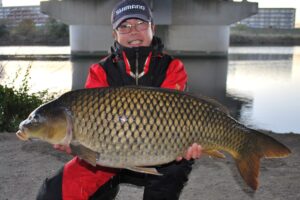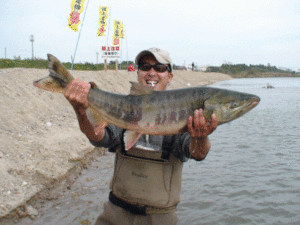Paintings of Fish in Edo Period, Part 1
This article features the paintings of fish drawn in 1835. To see them let us know how people in that period recognized fish. And they give us the idea how people in the Edo period looked at fish, in general.
These paintings are from a pictorial encyclopedia on fish, called Baien-Gyohinzusei 梅園魚品図正(ばいえんぎょひんずせい), drawn by Baien Mohri. In 1835. Baien Mohri was the naturalist born in 1798, while he had held his position as a samurai.
In this encyclopedia, what is significant is the explanation added, not only the detailed drawings of the fish. These explanations contain how and when they were caught etc. As they are showing the actual things around the fish in the picture, it gives us valuable information about fishing as well as general information.
Note
All these pictures are taken from the public archive of the link below.
Madai (Red Sea bream)
This Sea Bream was brought after it had been salted, since it was difficult to transport long distance as uncooked. The various sizes of fish were in demand. Larger size fish was used for special occasions such as a wedding party, and smaller size was used for seasonal gifts exchanged between households.
Comment
For the detailed explanation about this fish, please view my blog. The color combination of red and white has been believed to be the color of happiness and prosperity in Japan. And this is one of the reasons why Japanese people like this red sea bream. In this picture, we clearly see that this concept had been there in the Edo period already.
Tuna
This yellowfin tuna (Thunnus albacares) was caught about 12 km away from the shore of Nagasaki, and brought to Hirado Island. And then, it reached Izu Peninsula (quite likely at the current Shimoda port), to start the inland journey to Edo (current Tokyo), spending a total of 7 to 8 days. This Tuna had been seasoned with salt to keep its quality during these days.
Comment
The tuna was not popular fish to eat before the Edo period (details is in this article of mine.)
Salmon
Many Salmon (Chum Salmon, Oncorhynchus keta) were caught from Matsumae (southern Hokkaido) and from the current Tohoku area. They were transported after being salted. The raw fish were ones caught mainly from the Tonegawa river. The specially salt-seasoned one had a part full of oil around its head bone, called Hizu, and it was the number one food as a seasoned fish. Among this fish’s internal parts, eggs, being salted as a whole piece of sacked eggs taken from the fish belly, are called Sujiko.
Catfish
The Chikuzen area of Kyushu produced catfish. They were hiding under the holes in rocks normally, but in the case of very special events, they came out. In the event that the military of Satsuma was sending their big number of soldiers to recover their occupied land, in 1586, many catfish were out in the water, getting out from their holes. And there were some other similar cases that were observed occasionally.
Note; in Japan, there is a superstition that Catfish become suddenly active when the earthquake comes. Some people say there is some scientific evidence for it. Maybe catfish can detect some important human event, not necessarily the nature event, according to this picture.
Hiramasa (Yellow Amberjack)
Hiramasa (Yellow Amberjack) is one subspecies of Buri Japanese Amberjack, and different from Kampachi Greater Amberjack. Greater Amberjack had more brown color while Yellow Amberjack had more blueish. The form of Yellow Amberjack was similar to that of Japanese Amberjack. They were different kinds of fish products as merchants were talking, around then.
Comments
It is amazing that people in that time had already recognizes and differentiate these three kinds of fish. They were quite keen to the taste of the fish, definitely.

